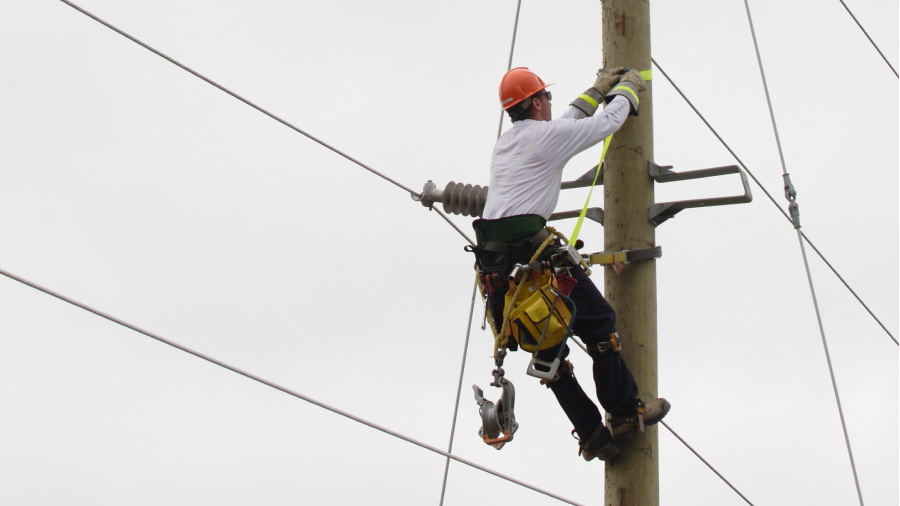Wooden utility poles are indispensable for the efficient and effective transmission and distribution of electricity. But to ensure their long-term functionality, wood poles require regular care and attention, and the importance of their continued maintenance cannot be understated.
The cost of replacing a utility pole can be prohibitive, making it far more economical and practical to be proactive when it comes to regular maintenance – an approach that also significantly enhances safety by reducing the risk of unexpected pole failures. Utility pole inspection software optimizes maintenance strategies by boosting data accuracy, improving productivity so maintenance and inspection schedules are on track, and ensuring consistent standards from inspector to inspector.
Join us as we explore how utility pole inspection software can help electrical utilities and contractors identify and mitigate potential issues with wooden poles to prolong their lifespans. To start, let’s lay out the scope of wooden utility pole maintenance to better understand its wider potential impact.
The scope of wooden utility pole maintenance
Approximately 135 million wood utility poles are installed across urban and rural areas in the United States. The typical lifespan of a wooden utility pole is about 40-50 years, although this can vary depending on location, weather conditions, and prior maintenance efforts.
The cost of replacing individual wooden poles averages $5000 per pole, depending on whether it’s in an urban or rural setting. With roughly 1.5 million wooden poles are replaced per year, this amounts to a nearly $8 billion annual price tag that still does not include the indirect cost of the logistical challenges or service disruptions associated with the replacement process.
Regular upkeep of a wooden pole is needed around once every ten years and typically ranges from $30 to $40 per service. Over a typical pole lifespan, this amounts to an overall maintenance cost of less than $200, a remarkable 2500% ROI compared to pole replacement.
Clearly, failure to properly maintain utility poles can very quickly lead to significant financial losses. However, a failed utility pole is much more than just an economic concern – it can be a serious safety hazard.
Prolonging pole lifespan through inspections
However critical, the importance of wooden power pole inspections goes well beyond identifying and mitigating existing issues.
When performed regularly and accurately, power pole inspections provide valuable insights that help prevent future infrastructure problems. Early detection of issues like structural weakness or environmental damage prevents hazardous failures and extends each pole’s service life.
In addition, inspections reveal deterioration trends — such as how environmental exposure or materials impact long-term pole durability. With greater visibility into these factors, utilities can use data to improve decisions about construction and ongoing maintenance.
Therefore, utilities and contractors can optimize material selection, construction methods, and maintenance timing through consistent, thorough field inspections.

Accuracy and action, pole to pole
Accurate inspections are essential for extending the lifespan of wooden utility poles and improving long-term maintenance outcomes. Industry-leading utility pole inspection software enhances this accuracy through a variety of features that streamline and strengthen the entire inspection process, including:
Cost savings. Digital inspections enable accurate and consistent data collection across pole inventories, reducing errors and increasing efficiency. Utilities and contractors can compare inspection data over time, saving millions—especially as better-maintained poles resist extreme weather more effectively.
Photographic evidence. Field inspectors can capture photos during routine inspections, creating a visual record of each pole’s condition. Because photographs offer objective documentation, they provide more reliable evidence than written notes, which may vary between inspectors.
In-app reference photos. Data collection tools include reference images to guide inspectors in categorizing pole conditions more consistently. As a result, teams reduce subjectivity and improve the accuracy of recorded inspection outcomes.
Integrated GIS. Built-in Geographic Information Systems ensure teams inspect the correct pole and collect location-verified data every time. This consistency allows utilities to make meaningful comparisons and avoid gaps in inspection coverage.
Real-time remediation. Utility pole inspection software allows teams to follow SOPs and apply treatments during inspections, avoiding return visits. Additionally, inspectors can assign follow-up tasks in the app, keeping larger repairs organized and visible across teams.
Harnessing digital inspection for future-proof maintenance
Adopting utility pole inspection software is a smart step toward sustainable and cost-effective wooden pole maintenance. When teams collect accurate and consistent data, utilities and contractors can improve maintenance decisions and replacement scheduling.
Furthermore, pioneering platforms like Fulcrum streamline pole inspection workflows, reduce failure risks, and save both time and money. As a result, utilities enhance safety, prevent hazardous incidents, and gain long-term value from investing in smarter inspection tools.
To learn more about utility pole inspection software for data collection and maintenance, check out how electrical utility contractor GeoForce used Fulcrum to tackle power outages with lightning speed.




